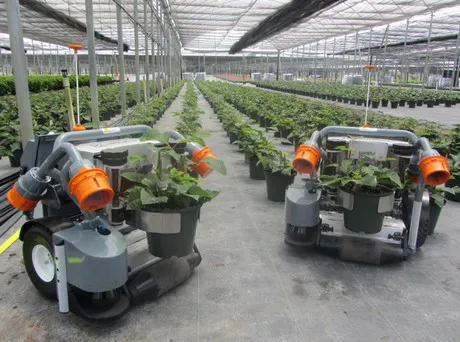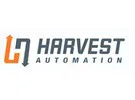Harvest Automation started 4 years ago and was founded by a group of Boston based entrepreneurs in robotic solutions. After some market research, they soon realized that agriculture was the biggest opportunity on a global scale for robot automation. Especially the nursery and greenhouse sector, which would become the market that the group focused on with regards to their robots. "We could have designed a robot for any kind of industry, but we realized that the greenhouses and nurseries industry was the biggest stand alone industry," said John Kawola, CEO of Harvest Automation. "Inside the greenhouse there are many tasks that are time consuming, and together with the shortage of labour, high labour costs and smaller margins on the products, the green industry proved to be a perfect sector to introduce robotics."
After market research and talking to growers, Harvest Automation found out that there was a big demand for automated plant container handling. "When you design a robot, you need to be aware of the fact that you are designing a robot for a specific job," said Kawola. "Some tasks can better be done by humans today, But there are also tasks that can be done by a robot more efficiently and moving plant containers was one of them. "

The plants in many nursery greenhouses are first planted in containers (pots) that are then evenly spaced on large fields. As the plants grow they are spaced further apart to give each plant more room to spread out. Later, as the plants are sold, leaving holes in the spaced pattern, they are consolidated into a tighter area.
Kawola: "The task of moving containers around is a difficult task, and nobody wants to do it anymore; it is a heavy and time consuming job. The mobile robots that we designed for this task are completely autonomous and are able to figure out where the plants are and where they should be moved to. They carry one plant at a time, less than the 2 or 4 that humans carry, but the robots don't need to take breaks and they can work overnight. The robots are also designed to be safe around humans, which allows a human labourer to be on the field with the robots to help them do their job."
The ground robot is able to do three things; spacing out containers, collecting batches and consolidating containers. According to Kawola the system doesn't require any difficult installations like a server, or control computer. "The only thing that a grower needs to do is to define the boundaries of the working field with special yellow tape. The robot recognizes this tape and will not cross this line. The grower can type all the orders directly into the robot."
After alpha testing in 2011, beta testing and trials in 2012, Harvest Automation, Inc. started selling the robots commercially in 2013. Some of the growers that were involved in the beta trials ended up being the first customers. After this the news of the robot spread across the industry like wildfire and many growers became interested. Right now there are 15 growers in North America that have Harvest Automation' robots working in their nursery.
But where will this go to? In the Netherlands much research has been carried out to develop special autonomous robots for horticulture, to enable them to pick fruits and sort and pack greenhouse vegetables or flowers. Looking forward, Kawola doesn't believe that robots will take over all of the tasks in the greenhouse nursery industry. "Maybe in the future there will be robots available that can do everything, but that will still take many, many years. Right now we only have to focus on designing machines that can help the human being in existing tasks, and respect the fact that you can't always design a robot for everything. You can improve and upgrade the accuracy and efficiency of robots, and that is what our work will focus on in the coming years.
 For more information:
For more information:Harvest Automation
John Kawola (e-mail)
www.harvestai.com
